
Has a marketing "expert" told you plain-text emails hit the inbox more often than HTML emails? Or that plain-text emails have a 100% deliverability rate?
If so, they’re lying or misinformed.
In this post, I’ll debunk the common myth that plain-text emails reach the inbox more than HTML emails.
Plain-text emails are NOT more likely to reach the inbox.
I interviewed email marketing and anti-spam expert Laura Atkins to get her take on this myth.
Laura is a founding partner of the anti-spam consultancy and software firm Word to the Wise, and she has over 20 years of experience tracing internet abuse. At Word to the Wise, she advises businesses on how to reach the inbox and respond to spam complaints.
I asked Atkins if plain-text emails are more likely to reach the inbox.
“Anybody who tells you that does not understand how email filtering actually works,” she says.
Are simple emails with fewer images and links more likely to reach the inbox?
I asked Atkins this question as well. She says the amount of images and links in your emails does not impact inbox placement. However, the reputation of the domain (URL) you’re linking to and the domain where you host images that are within your email does matter.
“Every link that you put in an email, every domain you link to in an email, every image that you link to in an email has its own reputation. If that image happens to be something that a lot of spammers use, it’s going to have a bad reputation,” Atkins says.
If you use the same links and images that spammers use, your email is more likely to go to the spam folder. To avoid this, don’t like to sites with a bad reputation or include images hosted on a site with a bad reputation within your email content.
Not sure if a site has a bad reputation? You can use tools like Cisco’s Talos to check. Just paste the domain you’d like to check in their reputation lookup field. If it’s blacklisted, don’t include it in your email content.
Pro tip: Don’t use link shorteners, such as bit.ly or tinyurl.com, in your emails. They can hurt your chances of reaching the inbox, too.
How do you reach the inbox?
Some people will tell you there are simple tricks to reaching the inbox, like not using the word “free” in your subject lines. This isn’t true, says Atkins. They don't understand how delivering emails works.
“Anybody who tells you, 'if you do X your email won’t go to spam,' doesn’t know how filters work,” Atkins says.
Atkins went on to explain that internet service providers (ISPs), like Gmail and Yahoo, use an algorithm which decides whether or not to deliver an email to the inbox or the spam folder.
These algorithms are complex and use machine learning. There are no easy tricks to deceive the algorithms. They are designed so that spammers can’t trick them.
Their number one goal? To deliver emails their users want and expect.
“This is their sole reason for existence … to identify what mail users want and to give it to them,” Atkins says.
Atkins says the best way to reach the inbox is to,
“Send mail your recipients want and expect.”
At AWeber, we recommend following this 4-step strategy to make sure your subscribers want and expect your emails:
- Set expectations on your email sign up form. Explain how often you will send emails and what kind of content you’ll send.
- Reiterate those expectations in your welcome email.
- Consistently deliver emails with the content you promised.
- Clean your email list regularly to remove subscribers who no longer want your emails.
The main takeaway? Whether your email is an HTML or plain-text email has nothing to do with landing in the inbox or the spam folder.
In fact, people often confuse simple HTML emails with plain-text emails. They think they’re sending plain-text emails when they’re really sending HTML emails. Let’s dive into the difference between the two types.
What’s the difference between plain-text and HTML emails?
An HTML email contains HTML code that impacts the appearance of an email. Here are some examples of common HTML elements that might be inside an email:
- images
- bullets
- hyperlinked text
- columns
- headlines
- call-to-action buttons
- bolded or italicized text
AWeber’s weekly newsletter FWD: Thinking is an HTML email.
Related: Subscribe to AWeber’s weekly FWD: Thinking newsletter to get email marketing advice and tips.
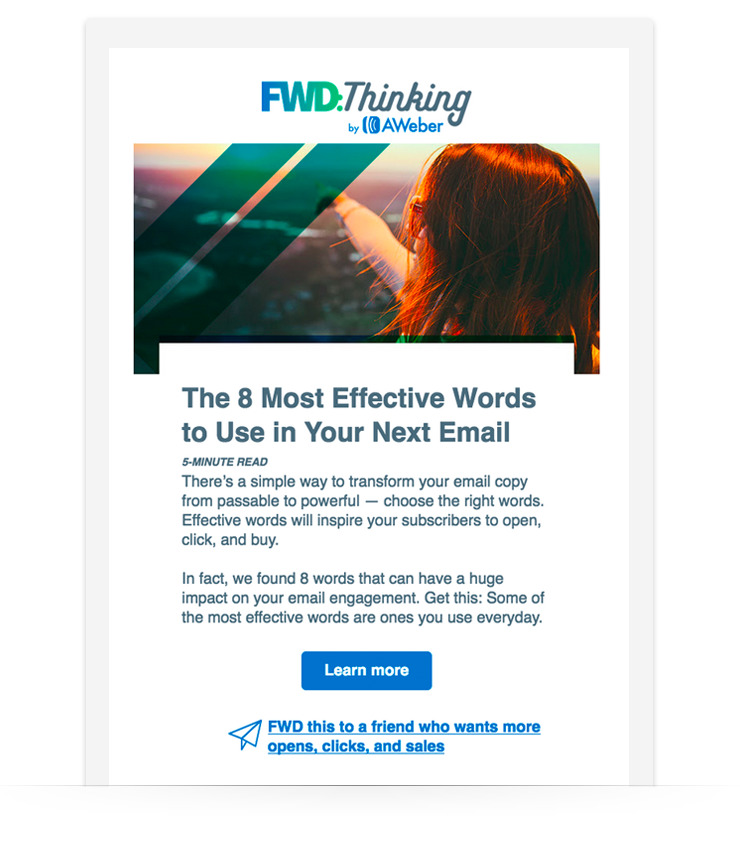
But this message from fitness expert BJ Gaddour is also an HTML email.
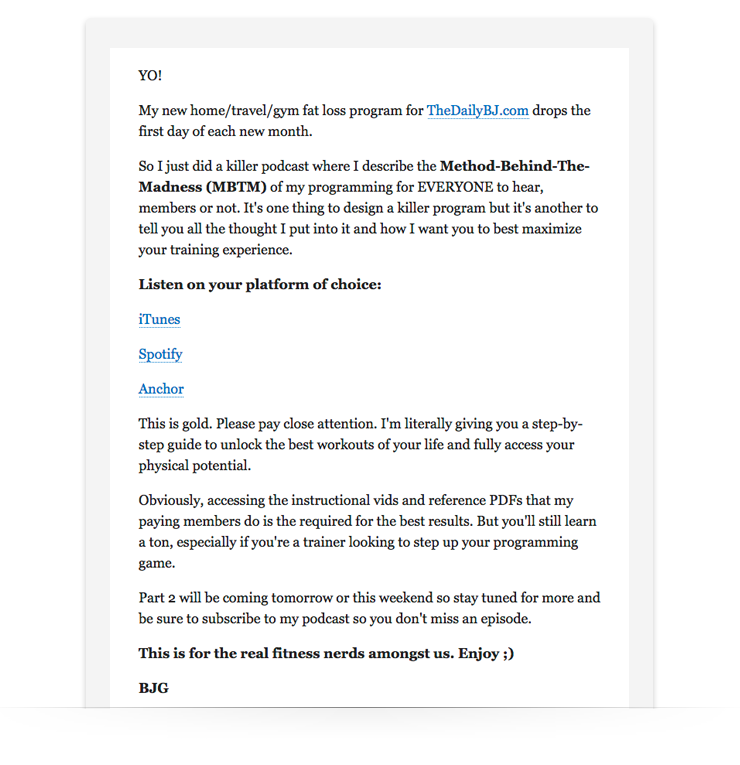
It doesn’t have images. It doesn’t use a fancy template. But it is an HTML email, because it contains bolded text and hyperlinked sentences — both HTML elements.
Most people think this email is a plain-text email, because it looks simple. But it’s not.
What does a plain-text email look like then?
It looks like this.
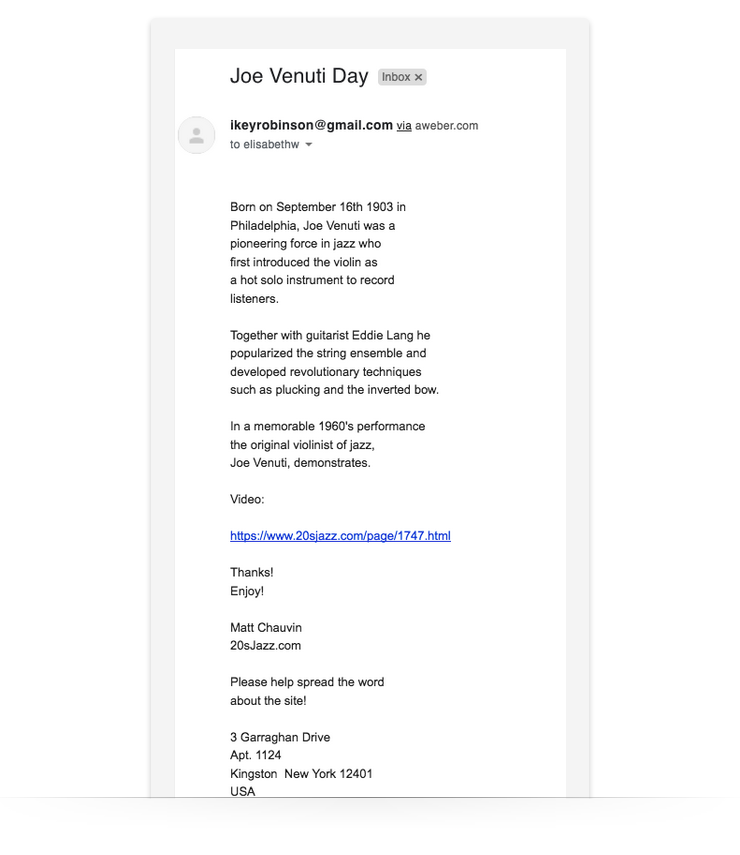
This email from Matt Chauvin of 20sJazz.com contains no images and no formatting. And notice that a full link is displayed in the email. With plain-text emails, you can’t hyperlink text. (For instance, Matt couldn’t hyperlink the word “Video” in the above email.)
In fact, a plain-text email contains only text, no formatting. But many people incorrectly label HTML emails with limited formatting as “plain-text emails.”
To illustrate the difference between a plain-text and HTML email, here is an HTML email from health food blogger Gina Homolka of Skinnytaste.
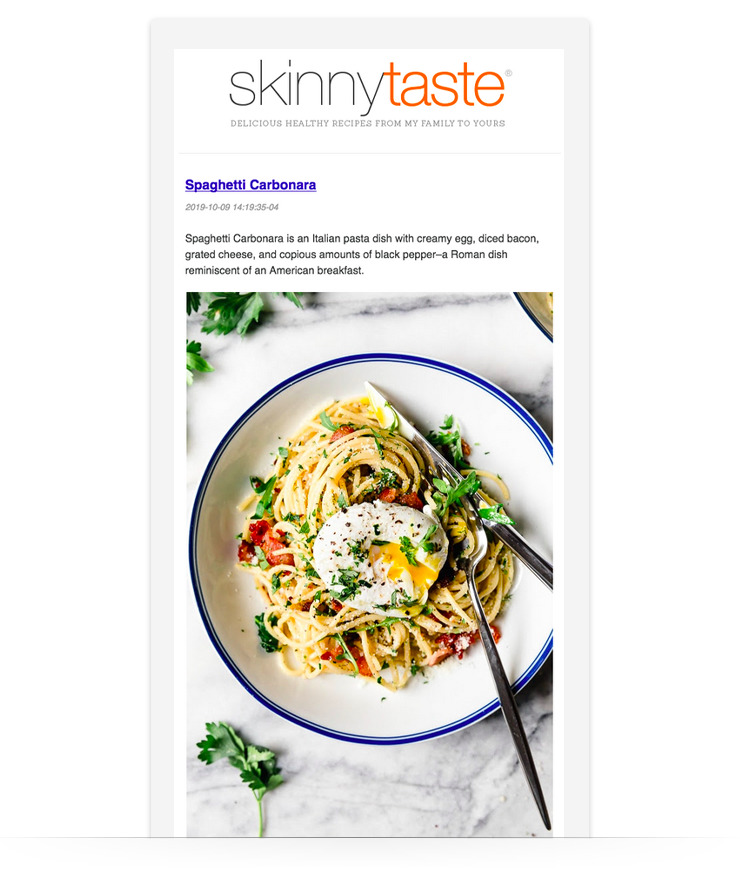
You can see there is a logo, italicized font, hyperlinked text (Spaghetti Carbonara), and an image.
Here is the plain-text version of the exact same email:
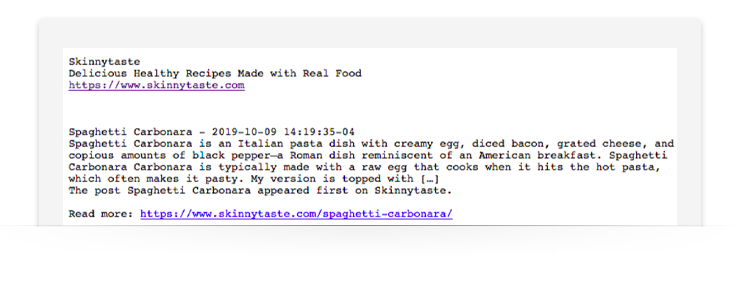
Big difference, right? The HTML version is much more visually appealing than the plain-text email. It’s also much more likely that subscribers will want to engage with the HTML version, because they can visualize the food from the recipe.
Spread the word.
Know a marketer or business owner who only sends plain-text or simple emails because they believe it will get them into the inbox? Send them this article.
And if you’re currently sending a plain-text email or want to enhance your current template, build a branded, HTML email in seconds for free using AWeber’s Smart Designer.
The post Are Plain-Text Emails More Likely to Reach the Inbox? appeared first on Email Marketing Tips.
from Email Marketing Tips https://ift.tt/2pIZ0Ht
via IFTTT
No comments:
Post a Comment